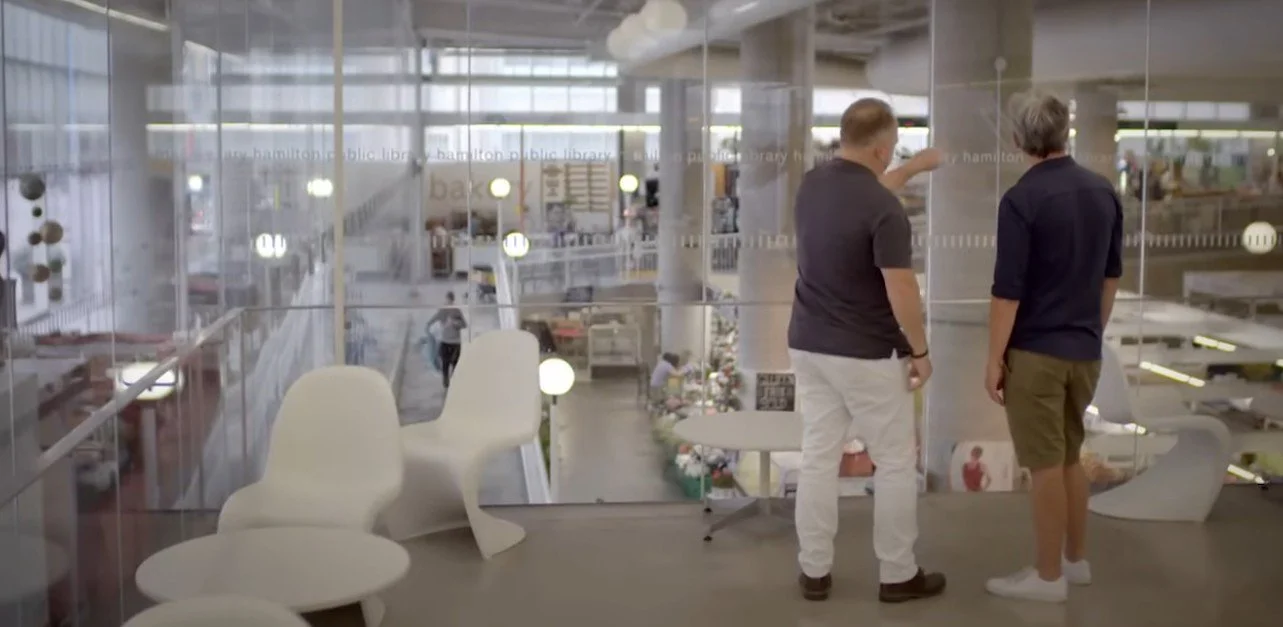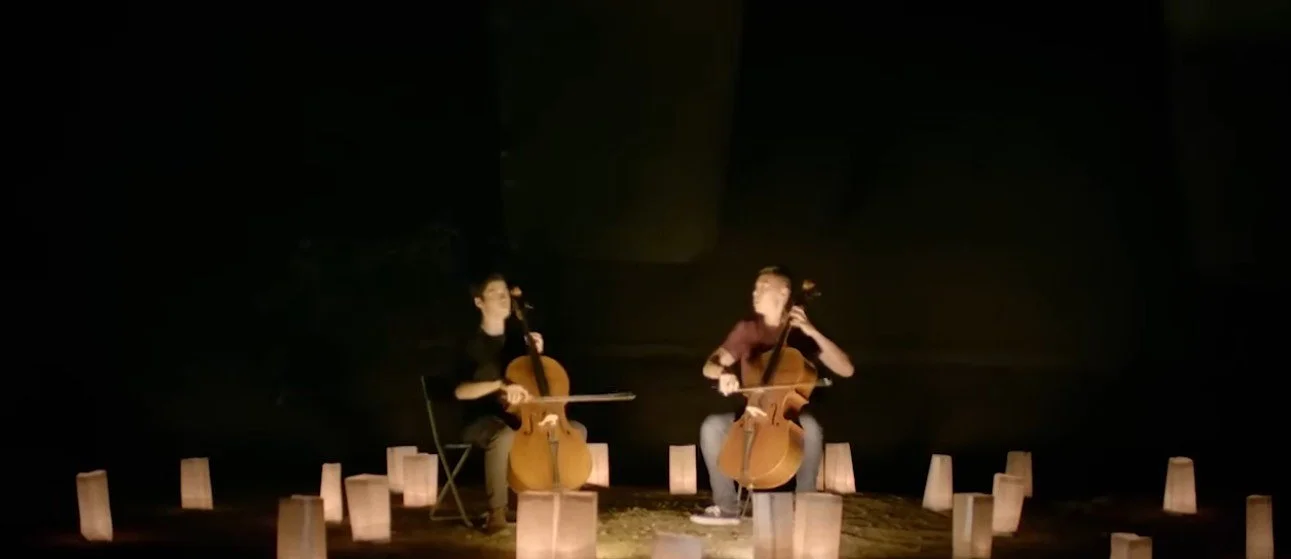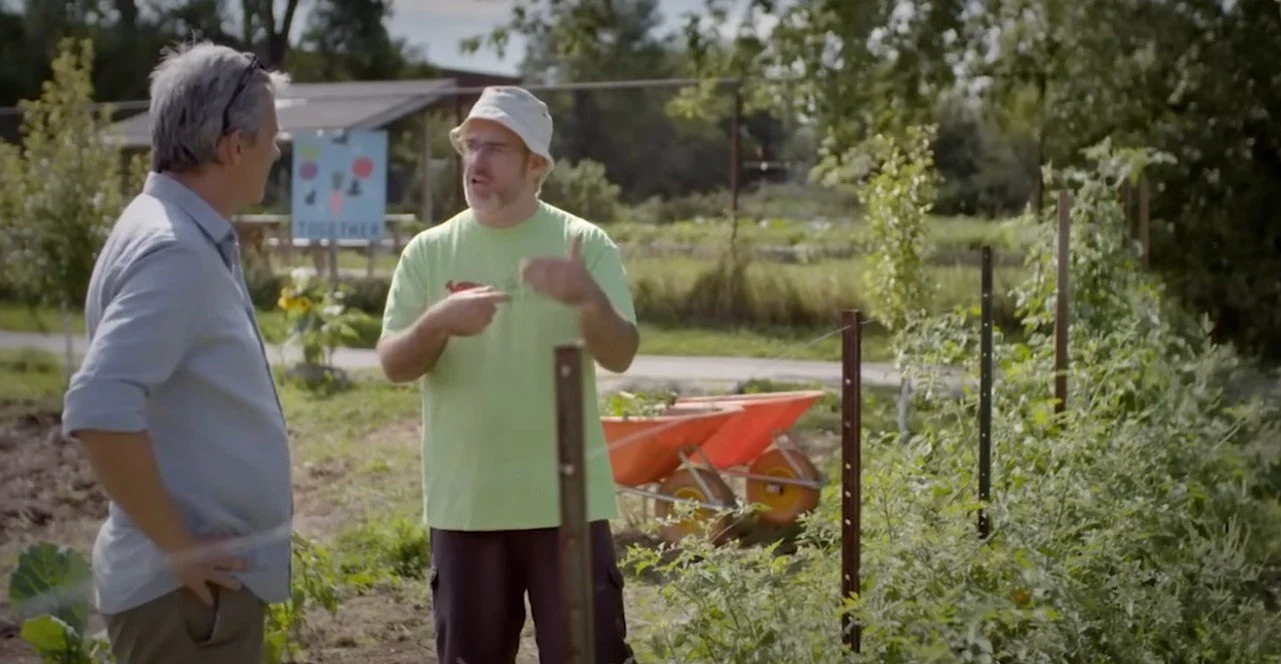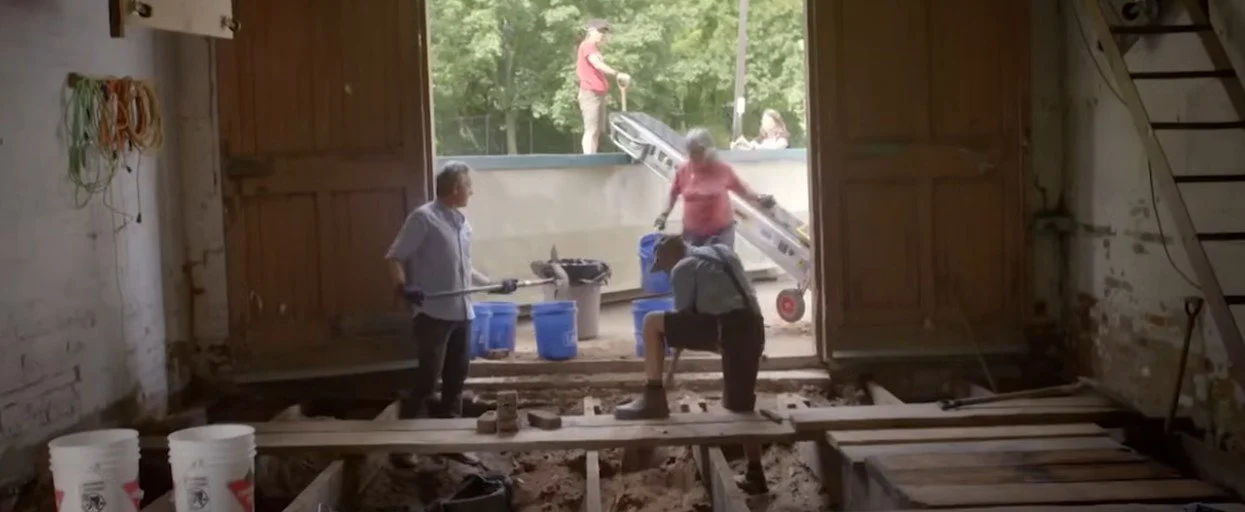The Life-Sized City - Hamilton, Canada
The third of our 2025 Screenings and Discussions events took us to Hamilton, Canada – in the company not only of Mikael Colville-Andersen but local residents Sarah Farr and Anthony Frisina who joined us on Zoom, and who brought valuable perspective to the discussion.
Mikael usually gives a pretty upbeat conclusion to his visits – the green shoots, the direction of travel of changes he’s seen. But at the end of his visit to Hamilton he was more ambivalent – simply praising the pride and strength of the city and its people. To be clear, there were some rather wonderful local people on show here, so perhaps his faith was placed on the right shoulders.
Architect David Premi set out the basics in the intro section – a city that had been hit hard by a succession of body blows – loss of industry, poor transport decisions, urban decay. But he quickly showed the positives – the opportunity of available building space to bring together the city’s main library and covered market, turning a “repository of knowledge” into a place of creativity – the reading areas overlooking the bustling market.
He also flagged up one of the big challenges – which York shares – of the need of suburban residents to get into the city centre through areas which are home to people (a bigger-scale version of the last episode’s bingo-card initiative). Years back a one-way loop was instigated to speed traffic – but this killed off life in neighbourhoods, and was more recently reversed, with two-way traffic being immediately slower and making streets (if only slightly) better for people. We discussed the role that congestion can play in encouraging people to explore other ways of getting around – free-flowing traffic isn’t always 100% “good”. We met members of Cycle Hamilton, working to improve infrastructure but battling with excessive road widths and bad junction design – a different problem to YCC’s frequent response from the council that “there isn’t room for a cycle lane” – but still challenging.
Hamilton showed how topography and highways can sometimes really divide a place, and we visited the park beneath Claremont Access where Surprise!Hamilton created a pop-up project to bring people together with candlelight and music, literally beneath a motorway. This was part of a city-wide project called 100In1Day – inviting community-driven events on the same day to show the power of interaction. We discussed how this might work in York – and the danger of waiting for “them” to organise something – we are all the “them”. We talked about neighbourhood events and how people might take more of a lead on things which were local, and with people they knew. Could we do a “in one day” event which invited the neighbourhoods to be creative – turning the view from the city centre back out to the suburbs and villages?
Music took centre stage with a visit to Hamilton Music Collective and their “An Instrument for Every Child” initiative – bearing fruit as Zoom participant and Hamilton resident Sarah commented on how music seemed much more part of everyday life there than in the UK. The film also lingered with record shop owner and obvious local mover-and-shaker Mark Furukawa – describing the incredible mix of uses that can develop in a neighbourhood when there is the required freedom – catching a rooftop gig played to people in the streets below. We discussed whether UK neighbourliness was up to embracing this sort of event and it was noted that Young Thugs have a good rooftop performance space in York.
Obliquely there were connections with McQuesten Urban Farm – a huge food growing project (“people think it’s a garden. No, it’s a farm”) which had taken over the abandoned route of a highway project and turned it into a place to grow food in an area very short of healthy options. Conversation touched on the impact on young people – there was far less “mischief” in the surrounding neighbourhoods, driven by the way the project connected food, via cooking, with young people. There was joined-up thinking, with a very human touch.
That human touch was also on show in the laneways housing project and the work of Raise The Hammer – creating tiny houses from the former stables and garages at the back of bigger housing plots. Participants talked of thinking about the mix of people a city needs to have, and ensuring places for them to live, and also of the idea of “paying it forward” – putting in the work now to create opportunity for the young people of the future place. Our Zoom discussion touched on UK experience – the work of We Can Make in Bristol and local tiny house initiatives – and work that participant Jo Fox was doing on a future local project.
We talked about density and “how much space do you need?” – YoCo’s York Central proposals are for 4/5 storey living with limited private outdoor space but good quality shared space, and our discussion touched on the sharing of other resources too – books, tools and more. Sarah noted that “condo living” had a poor track record in Hamilton with people stretched to afford to buy and then realising mortgage and living costs were too high. Alternatives:- well, in York, take a look at YoCo’s proposals here.
YoCo was born out of the final step of My Future York’s approach to public engagement – build a brief, explore the challenges, and make change together. The basis of this is that whatever physical stuff happens – regeneration, development – new buildings and places, it’s all worth little if people don’t take it on and shape it by using it. Mikael meets a council officer who spells out how a new dockside development will be better, but as local resident Sarah reports, it’s currently stalled due to a downturn in the housing market. There is little affordable housing provision there – council housing or social landlords – so the process relies on market housebuilders, who rely on, well – the market.
It’s worth bearing in mind back here that aspirations for Affordable homes – be that 20% or 40% or whatever – also rely on market forces. It’s likewise worth remembering that making change together only works when you invite the community in and do so in ways where they can genuinely take ownership and shape agendas. The previous blog concludes on this point and it’ll be the subject of upcoming discussions with the York Central developers as they recover from the pressures of getting the more strictly physical stuff into the planning process.




